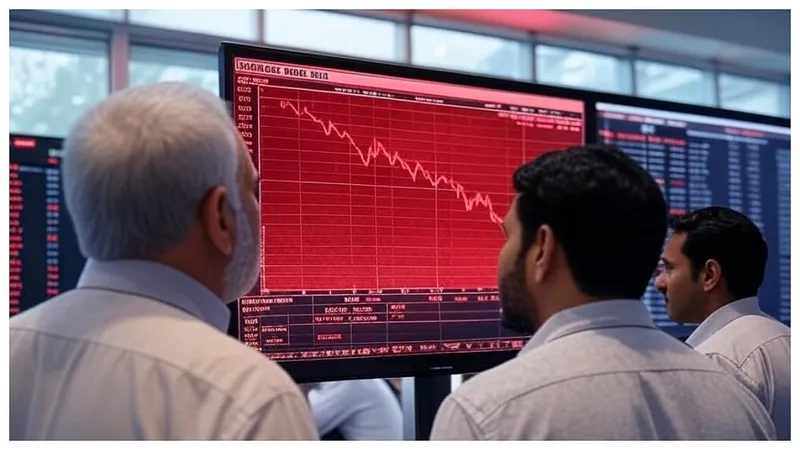Karachi’s trading floor was a grim scene on April 24, 2025, as the Pakistan Stock Exchange’s KSE-100 index nosedived over 2,000 points in a single day, wiping out billions in market value. The crash, one of the worst in recent memory, came as India unleashed a barrage of diplomatic measures following a deadly terrorist attack in Pahalgam, Kashmir, while the International Monetary Fund slashed Pakistan’s growth forecast to a meager 2.6%. These twin blows, layered atop Pakistan’s chronic economic woes, sent investors scrambling for the exits.
India’s response to the Pahalgam attack was swift and severe. On April 23, New Delhi announced the suspension of the Indus Waters Treaty, a 1960 agreement governing shared river resources critical to Pakistan’s agriculture and hydropower. The move, coupled with India’s decision to halt the SAARC Visa Exemption Scheme for Pakistani nationals and expel six Pakistani diplomats, signaled a sharp escalation in tensions. Trade between the two nations, already limited, faced further strain as India tightened border controls. For Pakistan, reliant on stable regional ties, the diplomatic freeze was a gut punch.
At the same time, the IMF’s latest report landed like a brick. On April 21, the fund cut Pakistan’s 2025 growth projection from 3.2% to 2.6%, citing persistent inflation, high debt, and weak foreign reserves. The downgrade came despite a $7 billion Extended Fund Facility approved in September 2024, meant to stabilize the economy. Investors, already jittery, saw the reduced forecast as a sign that Pakistan’s recovery would be slower and shakier than hoped. The report highlighted structural issues—energy shortages, tax evasion, and reliance on external borrowing—that have dogged the country for years.
The stock market’s collapse was immediate. By midday on April 24, the KSE-100 index had shed 1,500 points, and panic selling pushed the losses higher. Banking and energy stocks, the market’s heavyweights, took the hardest hits. The Pakistan Stock Exchange’s website crashed under the strain of traffic, leaving traders in the dark. By the close, the index was down 2,154 points, a 2.8% drop, with trading volume spiking to levels unseen since the 2022 floods.
Pakistan’s economic troubles are nothing new. The country has faced 23 IMF bailouts since 1958, a record that underscores its struggle to break free from debt traps. Foreign exchange reserves, at $9.2 billion in March 2025, cover barely two months of imports. Inflation, though down from a peak of 38% in 2023, still hovers near 12%, squeezing households and businesses. Power outages, driven by unpaid debts to energy suppliers, remain a daily reality, hamstringing industry.
India’s actions and the IMF’s report weren’t the only sparks. Local analysts pointed to fears of capital flight as foreign investors, spooked by the geopolitical flare-up, pulled funds. The Pakistani rupee, already down 3% against the dollar this year, faced fresh pressure. The State Bank of Pakistan, in a statement on April 24, said it was monitoring markets and ready to intervene, but offered no concrete steps. The government, led by Prime Minister Shehbaz Sharif, called an emergency meeting with finance officials, though no public outcomes were announced by April 25.
The crash’s ripple effects were stark. Small investors, many of whom entered the market during a 2024 rally, faced devastating losses. In Karachi, shopkeepers and taxi drivers swapped stories of wiped-out savings. Major firms, from cement makers to textile giants, saw their share prices battered, raising fears of layoffs in an economy where unemployment already tops 6%.
On April 25, the KSE-100 index clawed back 300 points in early trading, but confidence remained fragile. India’s foreign ministry reiterated its stance, linking further talks to Pakistan’s action against terrorism. The IMF, in a follow-up note, urged structural reforms, including widening the tax base and privatizing state-owned enterprises. Pakistan’s finance ministry, in a brief release, vowed to stabilize markets but gave no timeline.
The facts are clear: Pakistan’s stock market lost 2,154 points on April 24, 2025. India suspended the Indus Waters Treaty and other bilateral measures on April 23. The IMF cut Pakistan’s growth forecast to 2.6% on April 21. The country’s reserves stand at $9.2 billion, inflation at 12%, and the rupee has weakened 3% in 2025. The government and central bank are in crisis talks, but no solutions have been announced.

